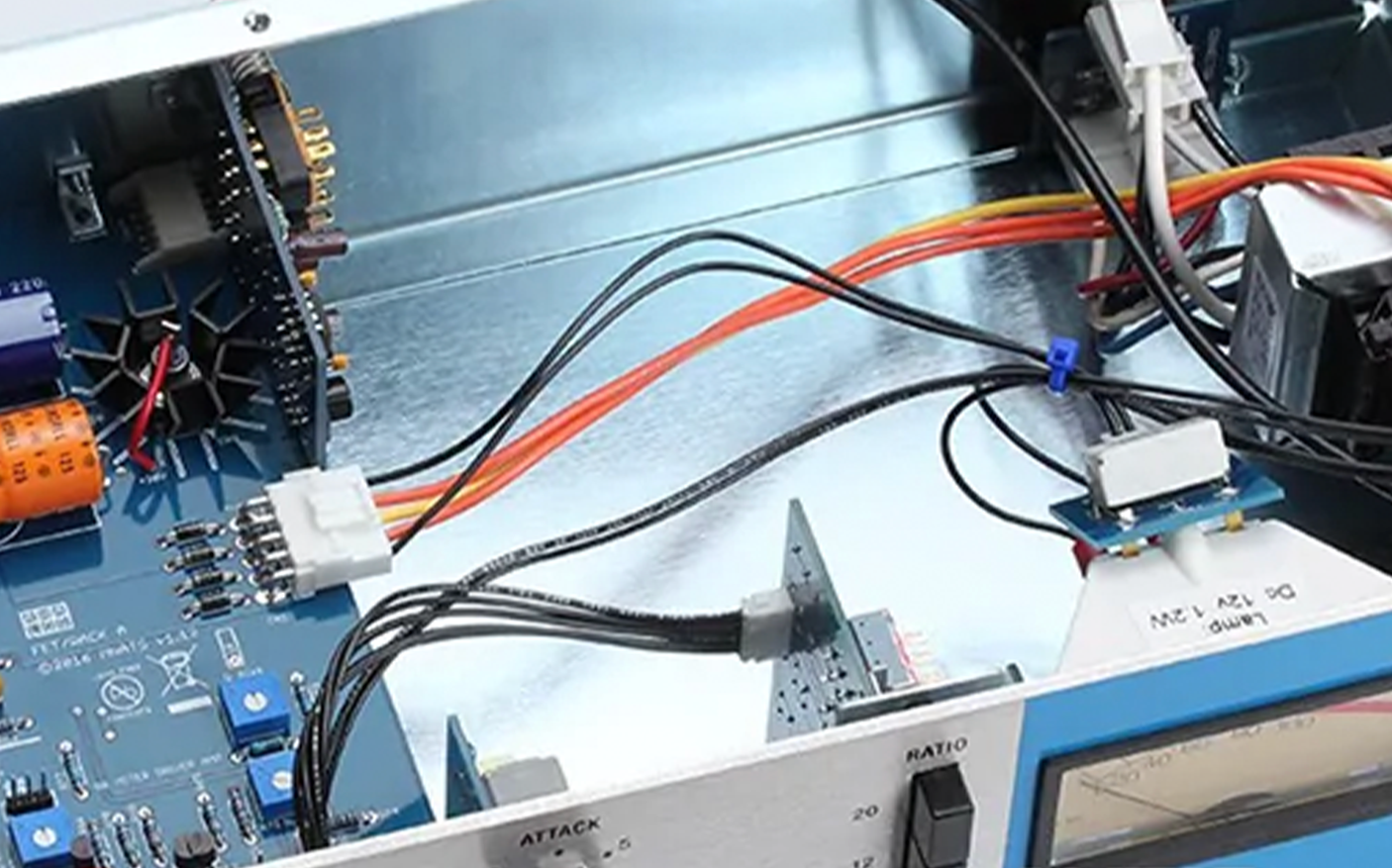We decided to buy a Hairball 1176 Rev G Compressor / Limiter (Clone). We purchased the full kit from a very well respected company called Hairball Audio. What they do is sell you everything you need to build your very own exact clone of an 1176 revision A/D/F/G. As this is our first build we decided to go with the cheapest option. That way if we do mess it up we haven’t forked out £500. The version we are building cost us £300 for all components and parts. This is going to be a great addition to the Audio Animals studio and once this unit is built and we have our heads around the build, we will be building another 7 units. 4 stereo pairs of revisions A/D/F/G.
The UREI 1176 Peak Limiter is a classic audio compressor designed by Bill Putnam, first built in 1967, making use of FETs and using them as a variable resistor to control the gain reduction in the circuit. The 1176 has been employed in countless recordings over the years and it is still used by almost every recording studio. If you cannot afford a new unit, then DIY is the best way both to save money and to get great satisfaction.
- Revisions A and B. Also called “stripe” are the basis for all the other revisions. The signal and line amp are based on the 1108 microphone preamp and use a FET as the first active component in each amp stage. The sound is characterised by a small amount of distortion due to the lack of the low noise circuitry (introduced in later revisions).
- Revisions C/D/E. Many current reissues are based on these revisions including Purple Audio MC77 and Universal Audio 1176LN. These revisions have got a blackface front and have the suffix “LN” which stands for “low noise”. In fact all of the circuit changes are intended to reduce noise and distortion.
- Revision F. In this unit the class A 1108 preamp is replaced by a “push-pull” amplifier based on 1109 style class AB preamp with an output transformer that gives more output gain and a slightly different sonic character. Rev. F switches from a discrete to opamp based metering circuit.
- Revision G. This revision removes the input transformer in favour of an IC differential amplifier. The output is class A/B and it uses a B11148 output transformer. F and G are the cleanest revisions as they measure the lowest harmonic distortion resulting in a less coloured sound, although preserving the 1176-style compression.

